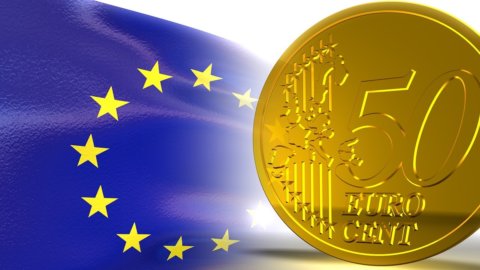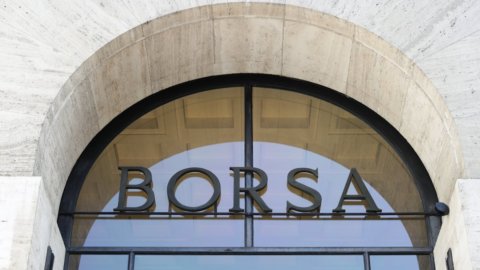Siamo arrivati ormai a pochi giorni dagli Stati generali per l’export, e pare che le proposte dei vari tavoli di lavoro per il rilancio dell’export e dell’internazionalizzazione delle nostre imprese siano pronte e solo da definire negli ultimi dettagli. Così almeno dice in un suo comunicato stampa il neo Viceministro Catia Polidori.
In attesa di verificare se la kermesse romana del 28 e 29 ottobre produrrà buoni frutti o se sarà solo un’inutile parata di buone intenzioni, vediamo di fare il punto della situazione dal nostro osservatorio.
Prima di tutto, prima di giungere agli strumenti legislativi e tecnici, è bene chiedersi quali sono gli obiettivi di fondo di un sistema di sostegno all’internazionalizzazione e come essi vadano perseguiti in un paese, ed in un momento storico nel quale, lo sappiamo tutti, i fondi disponibili sono necessariamente scarsi.
E’ facile definire gli obiettivi di fondo, perché, almeno questi, non sono cambiati da anni, e cioè:
1. Avere una struttura di promozione del Sistema Italia all’estero efficiente e coordinata;
2. Sostenere le esportazioni con una serie di interventi almeno in linea con quelli in vigore negli altri paesi industrialmente avanzati;
3. Sostenere gli Ide (investimenti diretti esteri) delle nostre imprese, ormai indispensabili per la loro permanenza nei mercati internazionali.
Per quanto riguarda il primo punto, non occorre aggiungere una parola di più rispetto a quanto oggi pubblicato sulle nostre pagine da Ugo Calzoni sulla (supposta) riforma dell’ex Ice, nel suo provocatorio ma ottimo articolo “L’Ice sembra un’araba fenice: 10 punti per voltare davvero pagina e creare un’Agenzia per l’export”. Bisogna poi dire che gran parte della promozione estera sarebbe in teoria affidata alle Regioni fino dal 1997, ma in realtà le agenzie regionali hanno finora prodotto scarsissimi risultati, o addirittura non sono ancora nate.
Per gli altri due punti, bisogna invece partire da una premessa: la struttura della Legge Ossola, che ancora dal 1977 regge il quadro normativo per l’export, e della legge 100 del 1990 (che istituì la Simest) che invece coordina il supporto agli Ide delle nostre imprese (riassunte nel decreto legislativo 143/98), è in gran parte superata dalla rivoluzione copernicana che si è avuta nei mercati internazionali. E’ cambiata non per gli obiettivi di fondo, ma per la sua concezione: oggi non si tratta più di sostenere economicamente, con contributi e con finanziamenti agevolati, le imprese che esportano o investono all’estero. Quanti contributi e finanziamenti servirebbero per sostenere tutti i processi di internazionalizzazione delle nostre imprese? Chi ci darebba i soldi necessari?
La parte da salvare è il sostegno ai crediti all’esportazione con dilazione dai due anni in su, che rimane valida, tanto è vero che molte aziende ancora lo utilizzano, attraverso le sue tre forme tipiche (buyer’s credit, forfaiting, sconto pro soluto con voltura di polizza Sace): perché è da salvare? Perché sono operazioni che riescono a combinare l’eliminazione del rischio di credito sul debitore estero con la maggior facilità di accesso al credito. E proprio questo il problema delle altre operazioni: le imprese che esportano con regolamento a breve termine (il 90% degli esportatori applica le normali dilazioni commerciali, da 90 a 180 giorni, a seconda della merce) e le imprese che investono all’estero hanno bisogno non di contributi, ma di credito, di finanziamenti per gli investimenti in capitale fisso e circolante, che negli ultimi anni sono arrivati con il contagocce da un sistema bancario in difficoltà.
Questa rivoluzione nella natura del sostegno alle imprese che operano con l’estero finora l’ha compiuta solo la Sace, i cui interventi sono infatti essenzialmente di “facilitazione dell’accesso al credito”, come l’ha definito nella sua intervista a FIRST online il suo amministratore delegato Alessandro Castellano. Come è dimostrato dal fatto che il paese verso cui più è esposta la Sace è proprio l’Italia: ben 8,3 miliardi di euro su un totale di 34,8 miliardi di impegni assicurativi a metà 2011 (quasi il 24%). Per il resto, è tutto fermo.
E la Simest? Diciamo che fa quel che può, divisa fra un’attività di sostegno agli investimenti ferma ancora agli strumenti di 20 anni fa (un altro mondo) e un’attività di agenzia per l’erogazione di contributi per l’internazionalizzazione (sempre più scarsi), per di più con un capitale sociale molto scarso e mezzi propri che non arrivano a 400 milioni di euro. Il problema di Simest, nel sostenere gli Ide delle nostre imprese, è che non riesce ad essere il punto di riferimento di un volano di flussi di credito per i consistenti finanziamenti di cui le nostre imprese hanno bisogno quando investono all’estero.
Partendo da queste premesse, ritengo che l’inizio di un processo di rifondazione del sistema di sostegno all’internazionalizzazione debba partire da alcuni punti fondamentali:
1. Avere un’unica normativa, un Testo Unico che aspettiamo dal 2003 almeno, che riunisca tutte le leggi e le norme su export e internazionalizzazione. Il nuovo TU dovrebbe contenere ovviamente tutte le nuove disposizioni che devono stimolare la crescita della presenza delle nostre imprese sui mercati esteri.
2. Riordinare gli enti che governano questi materia:
· sopprimere gli enti ormai inutili, come Buonitalia (promozione del cibo italiano all’estero), Invitalia (promozione degli investimenti esteri in Italia) ed Enit (promozione del turismo estero in Italia). Il caso di quest’ultimo ente è emblematico: secondo le parole dell’allora Vice Ministro Urso, “le competenze dell’Enit sono state trasferite alle regioni, ma mantiene 24 sedi all’estero, 200 dipendenti e ben 19 dirigenti. Non spende più un euro di promozione, serve solo a tenere in vita se stesso”. Le loro residue attività possono essere trasferite alle regioni o alla nuova Agenzia per l’Export, mentre la rete estera può essere smantellata e trasferita alle Ambasciate. Le sedi possono essere vendute o messe a frutto, e questi fondi possono essere utilizzati per i fini che tratterò in seguito;
· trasferire definitivamente Finest ed Informest alle regioni del Triveneto;
· ricapitalizzare Simest e aumentarne le tipologie d’intervento.
In questo modo rimarrebbero solo i tre enti che si occupano dei tre pilastri del sostegno: l’Agenzia per l’export (promozione), la Sace (aspetto assicurativo), la Simest (aspetto finanziario).
3. Ampliare gli interventi a sostegno degli investimenti, che per ora sono – drammaticamente – fermi a quelli della legge 100, che è del 1990, attraverso:
· l’utilizzo di parte dei fondi derivanti dall’aumento di capitale di Simest (nell’ordine di € 300 milioni) per promuovere la costituzione di un Fondo di venture capital vero e proprio, sul modello di quello che si sta organizzando per gli investimenti nei paesi del Mediterraneo (si veda l’articolo “Il Fondo per le PMI del Mediterraneo è la via giusta” del 22.9 su FIRST on line). Al Fondo dovrebbero partecipare le maggiori banche italiane, per arrivare ad un importo minimo iniziale di 1 miliardo. Le attività del Fondo dovrebbero essere diversificate: venture capital (ovvero ingresso nel capitale di giovani imprese high-tech nei paesi esteri per accompagnarne la crescita); garanzie per agevolare l’accesso al credito bancario delle imprese estere partecipate; finanziamenti diretti alle Pmi dei paesi dove viene effettuato l’investimento; assistenza e consulenza. Il Fondo (che dovrebbe partire entro non più di 6 mesi) opererebbe a livelli di mercato, senza incentivi, ma si tratterebbe di un intervento nuovo e molto più agile rispetto alla tradizionale partecipazione prevista dalla legge 100/90;
· la verifica della possibilità di estendere il contributo d’interessi previsto dall’art. 4 della legge 100/90, oltre che sui finanziamenti che l’impresa italiana riceve dal sistema bancario per effettuare l’apporto di capitale nella partecipata estera, anche ai finanziamenti a medio termine necessari per effettuare l’investimento.
4. Per ciò che riguarda le esportazioni, occorre dividere fra:
· esportazioni con regolamento a medio termine (dai 2 anni in su): come detto prima, gli attuali strumenti sono sufficienti. Bisogna però che Simest aggiorni la matrice dei tassi congrui (ossia dei tassi di riferimento, paese per paese, su cui si basa il contributo interessi previsto per i crediti all’export nelle operazioni di forfaiting), ferma al febbraio 2008, cioè a prima della crisi, quando i rischi paese erano molto meno onerosi e gli sconti pro soluto meno costosi;
· esportazioni con regolamento a breve termine (fino a 2 anni): occorre trovare nuovi strumenti che permettano di migliorare l’approccio al credito a breve per le aziende, e che colleghino meglio le polizze assicurative alle anticipazioni bancarie sui crediti export. Occorre che Abi e le principali assicurazioni del rischio di credito (Euler Hermes Siac, Coface Viscontea, Atradius Sic, Sace BT) si accordino per un contratto quadro che delimiti i termini di riferimento per operazioni di finanziamento o sconto pro soluto connesse alla voltura delle polizze a copertura dei rischi di credito a breve termine (come fu fatto anni fa con Sace per le analoghe operazioni a medio termine). Questo porterebbe due vantaggi: spingerebbe le aziende a coprire il rischio di credito, con tutti i benefici connessi; sgraverebbe le imprese da linee di finanziamento a breve, utili per altri scopi.
Quanto sarebbe il costo di queste misure? Molto poco, considerando che alcuni risparmi di spesa ci sarebbero, grazie alla soppressione di alcuni enti. Probabilmente non più di 250 milioni. Ma il ritorno, in termini di aumento delle esportazioni, maggior fatturato delle nostre imprese, maggiore occupazione e, in ultima soluzione, più elevato gettito fiscale ripagherebbe di gran lunga il costo della riforma.




